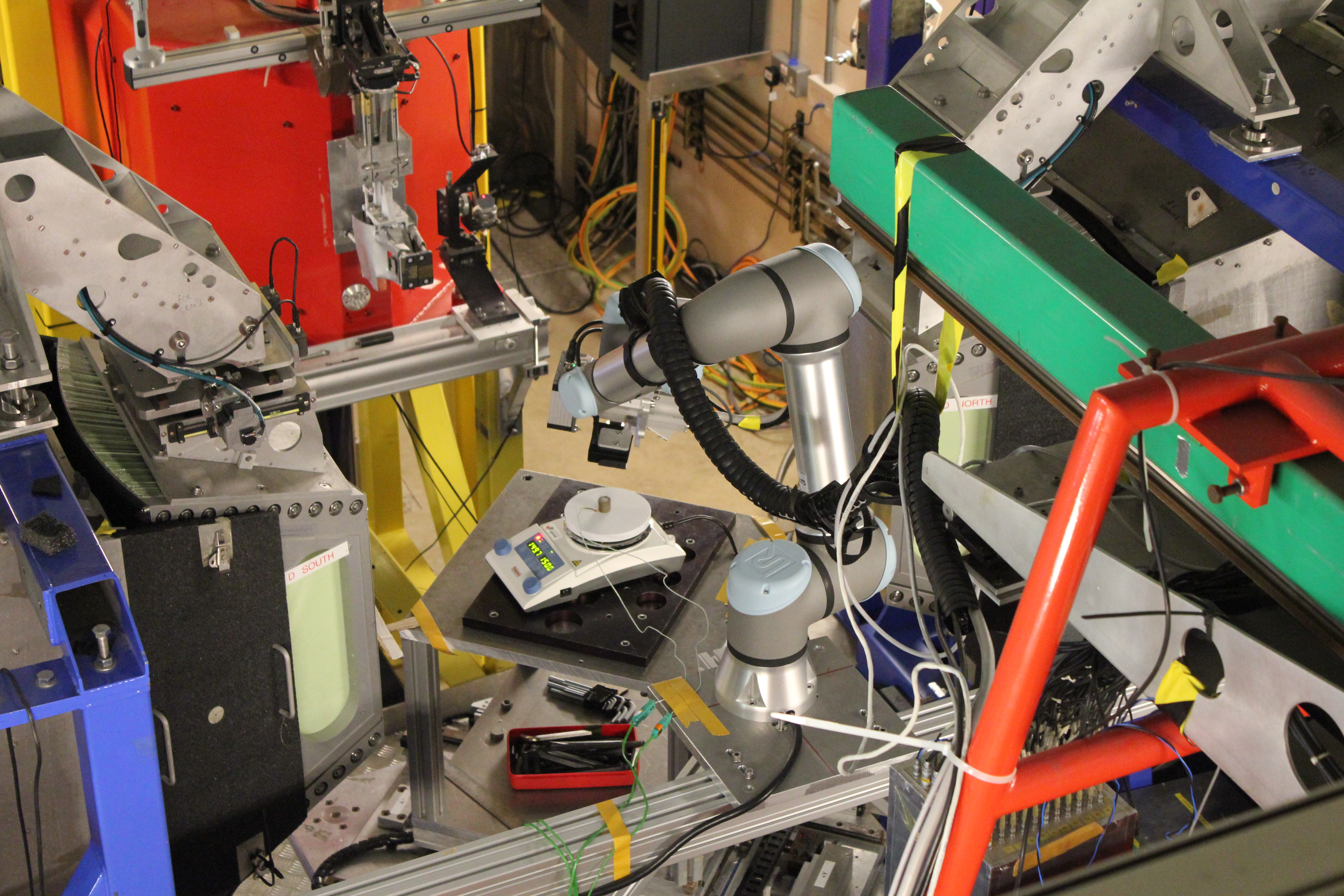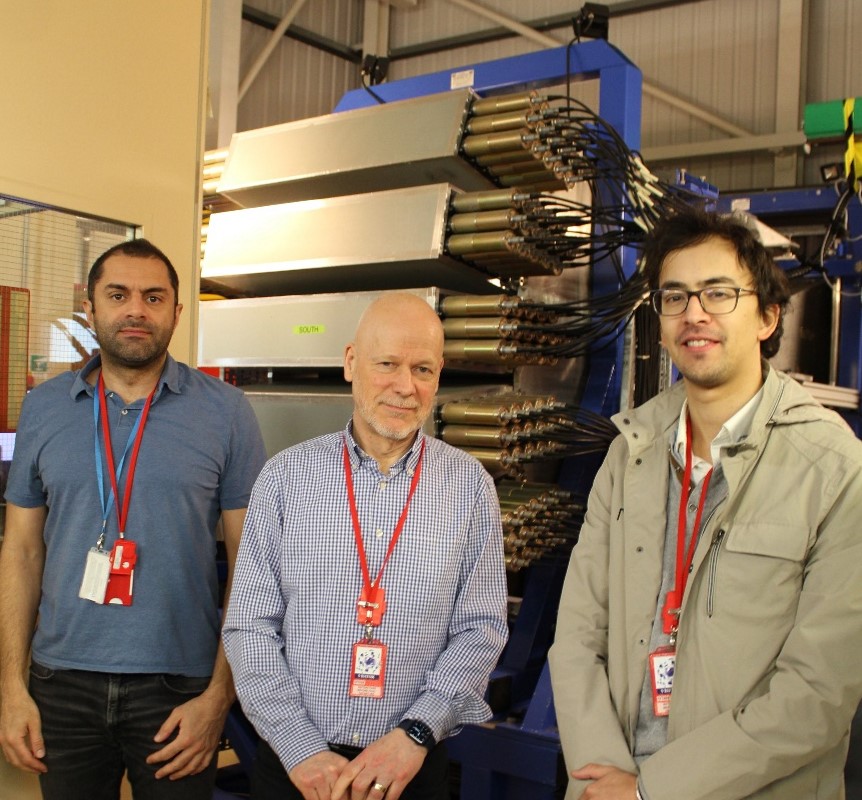Being able to combine neutron experiments to measure bulk stress and X-ray diffraction focusing on the surface of the sample would be very useful to the regular users of the Engin-X beamline. Thanks to STFC funding, the feasibility for this is now being tested.
Stress-Space Ltd (SSL) was founded in 2017 by research staff from the Open University, offering residual stress measurements to clients in the space, energy and transport industries. They help validate the design, manufacture, inspection and performance of engineering components. With the support of Stephen Nneji from the Research Software Engineering group at ISIS, they developed an adaptive robotic X-ray diffraction system to enable them to map surface residual stress across complex structures.
Recently, they received Cross-Cluster Proof-of-Concept grant funding from STFC to use this adaptive robotic X-ray diffractometer (X-Raybot) on the Engin-X beamline at ISIS to carry out simultaneous neutron and X-ray measurements.
In March 2023, despite the neutron beam to Engin-X not being available, Professor John Bouchard and Behrooz Tafazzoli from SSL came to ISIS with Adrien Sprauel from MRX Mesures Rayons X (the X‑Raybot manufacturer), to conduct feasibility studies. As the geometry around the sample area is quite tight, it was important for them to be able to test the movements of the robot to see if it was able to carry out its measurements without colliding with the Engin-X detectors and collimator.

With the help of beamline scientist Saurabh Kabra and the ISIS engineering team, the robot was mounted on a metal frame in the sample area. Using a small piece of nuclear pressure vessel steel as a test sample, the team were successfully able to measure the thermal strain at surface of the sample over a range of temperatures.
The ability to do combined neutron and X-ray measurements will be very industrially relevant. “Since announcing our award of the STFC Cross-Cluster Proof-of-Concept grant, I have already been approached by potential industrial partners who are interested in using the combined technique," explains John.
 Saurabh adds; “the length scales at which neutron and X-rays measure stresses are different. For most modern materials and components, measuring both under the same conditions is critical. The X-Raybot allows us to make those measurements on Engin-X and creates a unique capability not found elsewhere in the world."
Saurabh adds; “the length scales at which neutron and X-rays measure stresses are different. For most modern materials and components, measuring both under the same conditions is critical. The X-Raybot allows us to make those measurements on Engin-X and creates a unique capability not found elsewhere in the world."
Now they know that the X‑Raybot can be used on the beamline, the next stage is to check it can operate with other collimator and test component set-ups on Engin-X. John is hoping that Stephen Nneji will again be able to help, “as he has written the SScanSS-2 script controlling the Engin-X beamline, and developed the adaptive software control system for the X‑Raybot, we're hoping that he will be able to help us simulate the movements and interactions of the instruments in order to predict points of collision before they occur."
When TS1 is fully operational, the team will be back to test the equipment combined with neutron diffraction. After initial testing, there are already plans to return with an industry partner to measure samples relevant to their commercial work.
Image, right: Behrooz Tafazzoli, Professor John Bouchard and Adrien Sprauel
